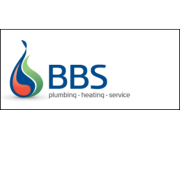Human Thermal Comfort Or Just Using A Doggy Blanket?
“Where have all your shaggy dog stories gone?” asked a customer when calling up my master, Bernard, to take a look at their boiler, which had decided to give up the ghost just before Halloween, woof, woof!
If only I had a shaggy coat like some of my other canine pals. The clocks have gone back and the long, cold dark nights are drawing in. Luckily I have a big, warm doggy blanket and, of course, Bernard has checked every last valve and connector to make sure our heating system works perfectly.
It’s not just a matter of swapping energy suppliers
With energy bills soaring, it is now more important than ever for our homes to be energy efficient and not waste one kilojoule. It’s not just a matter of keeping the costs of bills down by swapping energy suppliers but also having the right type of boiler, and ensuring it’s checked and regularly maintained so it works to maximum efficiency. This is especially important during the winter months of heaviest use.
Humans always expect their central heating system to work and constantly provide the required level of warmth, when required. But to do this, a central heating system must firstly be well-designed and efficient, which means all the components, such as the thermostat, boiler, radiators, and pipework are in perfect balance to produce the desired “thermal comfort.”
Thermal comfort factors
“Thermal comfort” is defined as the measure of satisfaction achieved when a desirable heat balance between the body and surroundings are met – such as resting on my blanket just in front of the radiator!
For human thermal comfort, the conditions are not so easily satisfied. There are several factors, which influence the ability to achieve a comfortable level:
– Air temperature at floor level should not be greater than 30 C below that at head level
– Airflow around the body should be horizontal and at a rate of between 0.2m and 0.25m per second. A variable air velocity is preferable to a constant one.
– Room surface temperatures should not be above the room air temperatures.
– Relative humidity of between 40 – 60 per cent.
– Air temperatures should be between 16-220 deg.C, dependent upon the type of activity being carried out, age of occupants and the quantity and quality of clothing worn.
Home value and energy efficiency
A degree of control over all of the above factors can be applied by insulation, draft reduction, control of condensation/ventilation as well as the heating. No two properties are ever alike – I know because I’m often allowed to sit in the van!
Ensuring hot water and thermal comfort heating to all parts of a home whenever it’s needed is more than just putting a boiler in and joining up the pipes. These days, the value of your home is bound up with how energy efficient it is at providing thermal comfort.
But not too bone dry – but that’s a pun better off buried. Hey its Halloween…woof, woof!






Leave a Reply
Want to join the discussion?Feel free to contribute!